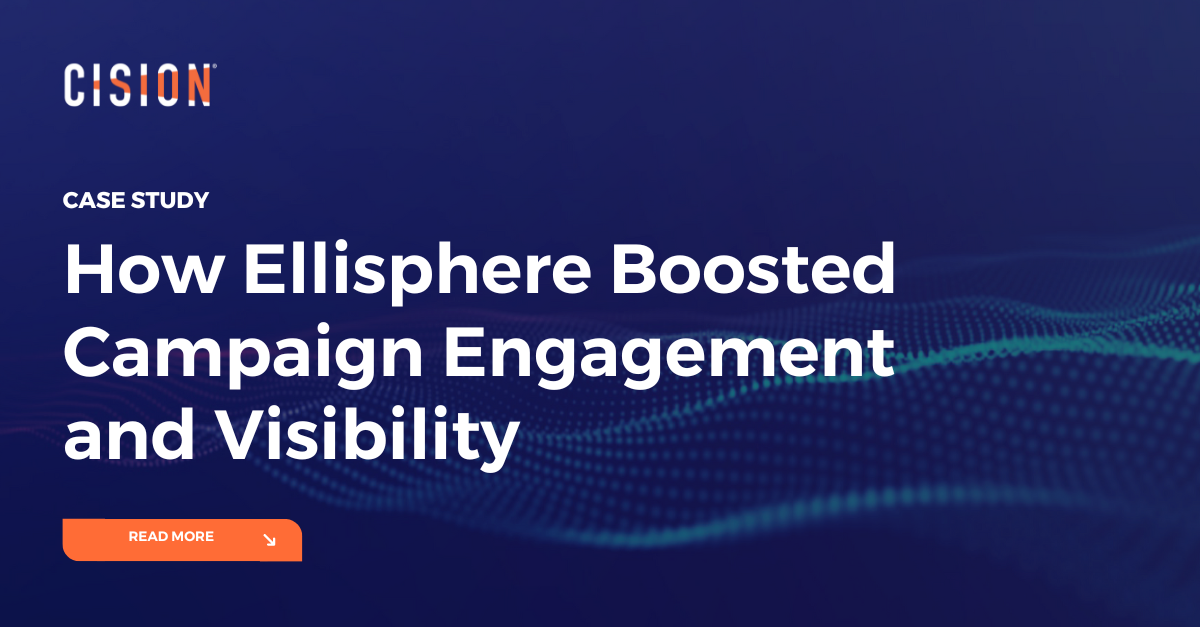“We create the world we want,” said Maria Ressa, the Filipino-American founder and CEO of the news website Rappler, upon accepting the 2021 Nobel Peace Prize for championing freedom of expression and speaking truth to power. The consummate communicator, Ressa spoke with clarity, sincerity and humility about how her own life experience fuels her mission to advocate for democratic values in her career.
Professional storytellers of all stripes – journalists, public relations and communications leaders, copywriters – may follow her example in the quest to create positive impact through authenticity and purpose.
Ressa’s personal story includes immigrating to the U.S. in her childhood and returning to the Philippines on a Fulbright Fellowship as a Princeton graduate to study political theatre. She honed her skills as a leader and communicator as the CNN bureau chief in Manila and then Jakarta, covering numerous international conflicts. After nearly 20 years at CNN, in the early 2000s, she created a Facebook page called Move.PH, which evolved into the vital news source Rappler in 2012.
She positioned the organisation to be tenacious in reporting on the violent Philippine drug war and critiquing fake news and propaganda. The strides Ressa has made in debunking propaganda and fake news in her native Philippines have been recognised on a global level, including the distinction of being one of Time Magazine’s Persons of the Year in 2018.
As with a young Queen Elizabeth addressing the British people during World War II and President Volodymyr Zelenskyy seeking international support for Ukraine’s independence, the stakes for Maria Ressa are extraordinarily high. She understands how to communicate that freedom of the press, along with truth and democracy, are worth defending and that doing so is critical to securing a stable future for humanity.
While not all institutional or business goals have such consequential geopolitical implications, communications industry professionals can learn a lot from Ressa, especially when considering how best to articulate an organisation’s purpose and greater societal contributions. Here are six ways communications professionals can model Maria Ressa’s communication practices.
Follow the Data
Ressa knows the dangerous impact social media can have on communities. Her media organisation, Rappler, exposed ways that supporters of Philippine president Rodrigo Duterte were using Facebook to manipulate public opinion while his administration carried out a murderous war on drugs in the Philippines. She received death threats on social media and faced multiple arrest warrants as a result.
Social media attacks “are meant to pound you into silence,” she later told PBS NewsHour’s Judy Woodruff. But Ressa had a weapon with which to fight back: inarguable facts. “You look at the data,” she said. “That started something different for us [at Rappler]. It was investigative journalism.”
Rappler and Ressa used data to show how fake news, disinformation (“a lie seeded for purpose,” as she has described it), empty viral phraseology, “memes” and various other propaganda were being weaponised to make people skeptical of things they saw, heard and read. It’s “insidious manipulation,” she said. “The data proves it. I lean on the facts. It’s evidence-based.”
The takeaway: When it comes to data, having a clear picture of the marketplace of ideas is critical for understanding the health of your brand and how you stack up against the competition at any given time. With data, strategic and informed decisions can be made to focus investment, drive successful campaigns that reach key stakeholders and deliver positive results.
Consider, too, how persuasive data is when included in your press releases, consumer-facing campaigns, investor relations materials and other content that you produce.
Always Be Prepared
“If you plan ahead, and you embrace your fear, then everything else is OK,” Ressa explained in an interview where she spoke about how she grapples with the pressures of being targeted by the government and by online trolls. She said that before leading a team of journalists into a conflict zone: “I would lay out the worst case and I would prepare for that worst case. Then I would be ready, and I could improvise in the moment no matter what happened.
Challenges to herself and her brand bolstered Ressa’s confidence and compelled her to stand her ground. “The more I was attacked for my journalism, the more resolute I became,” she said in her Nobel Prize acceptance speech. “I had first-hand evidence of abuse of power. What was meant to intimidate me and Rappler only strengthened us.” And she remained strong because she had a clear understanding of where her and her company’s values lay, and that led her to always look – and plan –ahead.
The takeaway: While most PR and communications professionals won’t ever find themselves in such life-threatening situations, the brands they serve can be faced with a death by a thousand cuts – especially in social media. Her advice to plan for every possibility is a strategy every public relations team should adopt to help ensure ownership of their brand story.
Say It Like It Is
It’s important to “say it like it is,” as Ressa advises. Tell your story truthfully and consider the individual people who make up the segments you’re addressing. This authentic person-to-person way of thinking about communication will be more engaging to audiences that matter. Trying to game an algorithm or buy followers won’t cut it anymore.
Ressa understands that the quality of engagement matters more than sheer quantity. “We’re responsible for our area of influence,” she has said. “And if we, each in our area of influence, live our values then we can connect…[all] these areas of influence. We have to find a new way of creating civic engagement in an age of exponential lies.” As Ressa says, “The immense openness and empathy that’s there – we need to bring this back into the virtual world.”
The takeaway: Remember that you’re speaking to humans – not numbers on a dashboard or columns of demographic targets or marketing personas. Consider how the words you use in the messages you create might resonate emotionally and intellectually on an individual, personal level.
Tell Stories That Resonate
When asked about the importance of journalism and the quality of information for the #HoldTheLine coalition – a nonprofit group formed to defend Maria Ressa and independent media in the Philippines – celebrated economist Joseph Stiglitz said, “You have to disseminate [information] in a way that people understand.” Eschewing clickbait headlines, Ressa and the journalists at Rappler break down complex political and social issues and make them more understandable to the general public.
The takeaway: Capitalising on content you create for one audience by sharing it with another may save some time, but customising your messaging so it speaks directly to different constituencies will have a greater impact. Consider vocabulary, voice and company or product values for each segment in your campaign.
For corporate communications professionals responsible for speechwriting, Ressa’s 2021 address to the Nobel Committee is a master class in oration. She weaves personal information and popular culture with historic facts, enumerates and explains key points that lead to her conclusion and call to action and consistently references her foundational values.
Harness the Power of Digital Channels
When thinking about launching Rappler in the Philippines, Ressa knew that “the very things that made legacy news organisations successful were the very reasons why they could not succeed in the digital age,” as she recalled in that same NPR interview. “It was just, you know, you’re too caught up in legacy systems.”
She and her news organisation have relied strategically on digital tools for information gathering and reporting, as well as to reach diverse audiences in the formats that suit them. With the vast majority of Rappler’s audience active on Facebook, that’s one platform that was critical to the distribution of national news.
It’s notable that she and Rappler are active in the same channels that feature propaganda and misinformation (the “competition”). By branching out across all media – digital, social and legacy – Ressa has cultivated an audience interested in facts-first journalism (the “product”).
The takeaway: Whether traditional channels of communication, such as network news, public appearances or books, or new media, such as social content, podcasts or e-newsletters, all technologies should remain on the table as long as they enable connection with audiences that matter to your brand.
Be Consistent
Perhaps the greatest takeaway from observing Maria Ressa exemplary mastery of communication is consistency of focus on her values. For Ressa, it’s democracy and freedom of the press – two matters that feature prominently on her personal Twitter and LinkedIn accounts and in her public addresses.
As she said in her Salant Lecture on Freedom of the Press in 2021, “You need to actually live your values when it matters the most, not when it’s convenient.” Brands and organizations must consistently walk the talk – especially when it comes to DEI, ESG or other values-based statements they make.
The takeaway: Authenticity matters, above all else.
And with solid data and intelligent analysis, proper planning to prevent or stave off a crisis, clear and consistent messaging that speaks to human psychographics and demographics, customised campaigns, a diverse portfolio of communication channels and the infusion of values and purpose, one can emulate Maria Ressa, a master of communications.
To learn more about how Cision is helping brands and brand professionals employ these lessons to refine their communications strategies, speak with one of our experts.
Most Recent Posts
Cision Resources
-
E-books and Guides
Comprehensive how-to guides on strategy and tactics
-
Case Studies
What are other brands doing – and how can we learn from them?
Learn More. Do More. demo new
PR Tips, Case Studies, and Product Updates

[On-Demand Webinar] The Next Generation of Media Intelligence: From Gorkana to CisionOne
Explore CisionOne, a revolutionary media intelligence platform, and the evolution of Gorkana. Learn key features and strategies from Luke Williams, CisionOne Product Marketing Manager. Elevate your media outreach to new heights!

